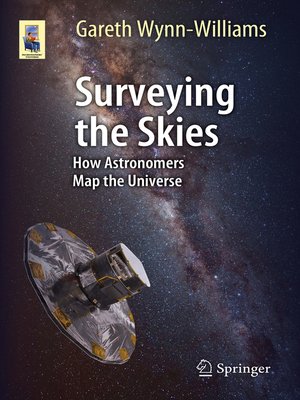Surveying the Skies
ebook ∣ How Astronomers Map the Universe · Astronomers' Universe
By Gareth Wynn-Williams

Sign up to save your library
With an OverDrive account, you can save your favorite libraries for at-a-glance information about availability. Find out more about OverDrive accounts.
Find this title in Libby, the library reading app by OverDrive.



Search for a digital library with this title
Title found at these libraries:
| Library Name | Distance |
|---|---|
| Loading... |
Since the time of Galileo, astronomy has been driven by technological innovation. With each major advance has come the opportunity and enthusiasm to survey the sky in a way that was not possible before. It is these surveys of discovery that are the subject of this book.
In the first few chapters the author discusses what astronomers learned from visible-light surveys, first with the naked eye, then using telescopes in the seventeenth century, and photography in the nineteenth century. He then moves to the second half of the twentieth century when the skies started to be swept by radio, infrared, ultraviolet, x-ray and gamma ray telescopes, many of which had to be flown in satellites above the Earth's atmosphere. These surveys led to the discovery of pulsars, quasars, molecular clouds, protostars, bursters, and black holes.
He then returns to Earth to describe several currently active large-scale projects that methodically collect images, photometry and spectra that are then stored in vast publicly-accessible databases. Dr. Wynn-Williams also describes several recent "microsurveys" – detailed studies of small patches of sky that have led to major advances in our understanding of cosmology and exoplanets.
In the first few chapters the author discusses what astronomers learned from visible-light surveys, first with the naked eye, then using telescopes in the seventeenth century, and photography in the nineteenth century. He then moves to the second half of the twentieth century when the skies started to be swept by radio, infrared, ultraviolet, x-ray and gamma ray telescopes, many of which had to be flown in satellites above the Earth's atmosphere. These surveys led to the discovery of pulsars, quasars, molecular clouds, protostars, bursters, and black holes.
He then returns to Earth to describe several currently active large-scale projects that methodically collect images, photometry and spectra that are then stored in vast publicly-accessible databases. Dr. Wynn-Williams also describes several recent "microsurveys" – detailed studies of small patches of sky that have led to major advances in our understanding of cosmology and exoplanets.







